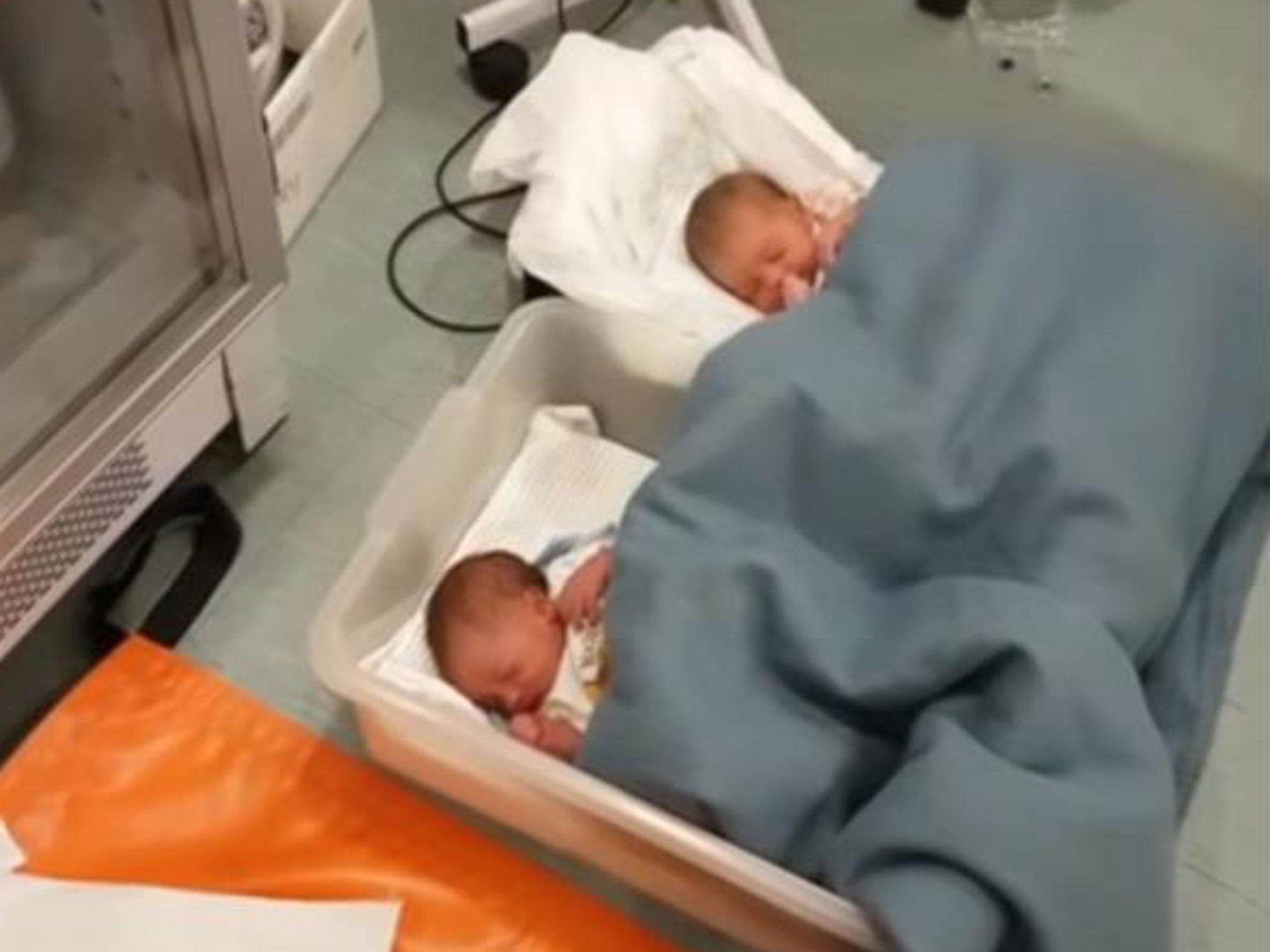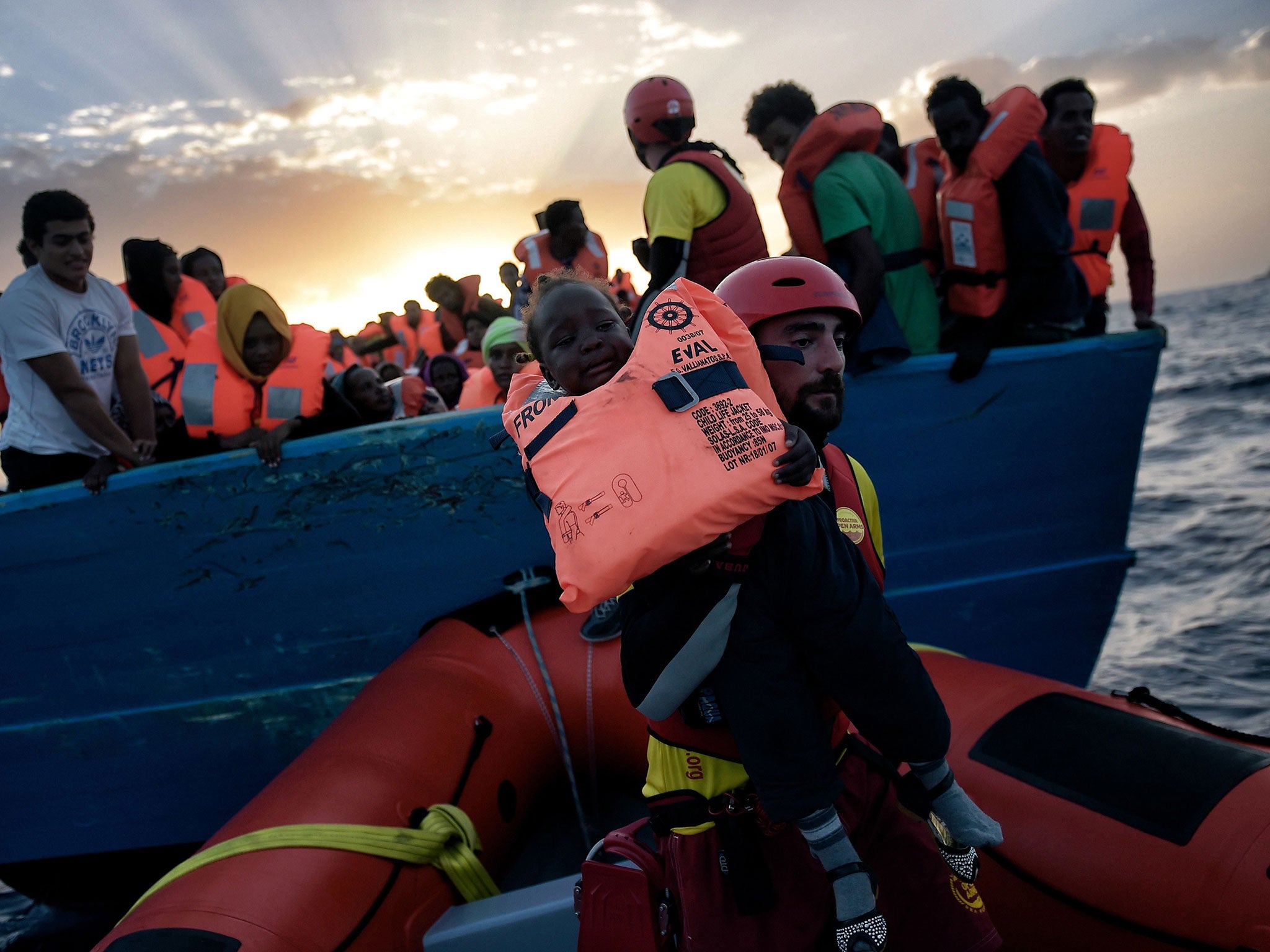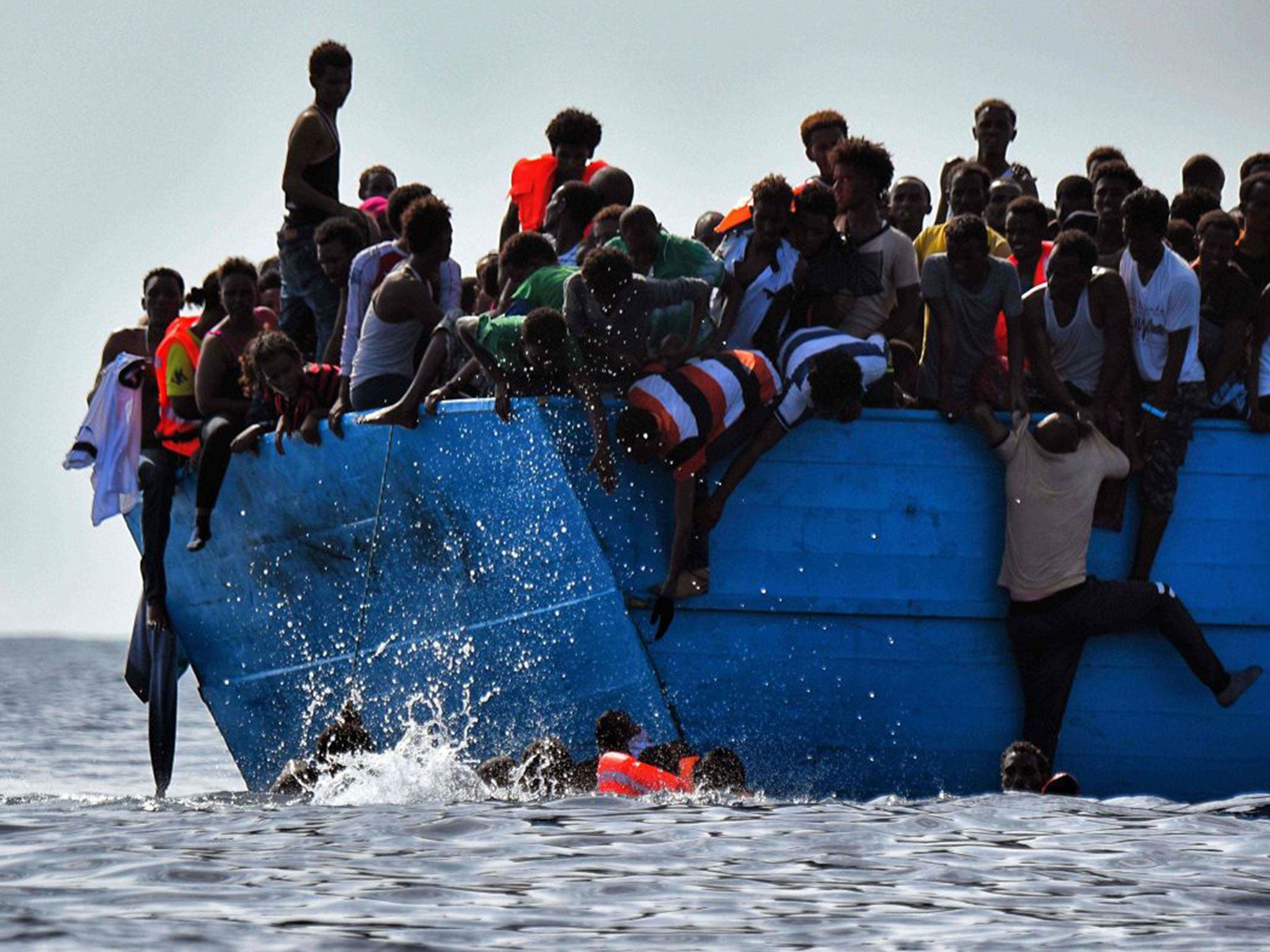Three women who gave birth on journey to Europe among 11,000 refugees rescued over 48 hours in Mediterranean
Dozens of bodies have been recovered after refugees drown and suffocate to death on boat
Your support helps us to tell the story
From reproductive rights to climate change to Big Tech, The Independent is on the ground when the story is developing. Whether it's investigating the financials of Elon Musk's pro-Trump PAC or producing our latest documentary, 'The A Word', which shines a light on the American women fighting for reproductive rights, we know how important it is to parse out the facts from the messaging.
At such a critical moment in US history, we need reporters on the ground. Your donation allows us to keep sending journalists to speak to both sides of the story.
The Independent is trusted by Americans across the entire political spectrum. And unlike many other quality news outlets, we choose not to lock Americans out of our reporting and analysis with paywalls. We believe quality journalism should be available to everyone, paid for by those who can afford it.
Your support makes all the difference.Almost 11,000 refugees have been rescued in the Mediterranean Sea in just 48 hours as thousands of migrants continue desperate attempts to reach Europe.
At least 50 bodies have been recovered so far, with 20 suffocating in the hold of an overcrowded fishing boat and others drowning.
A pregnant woman was among the dead counted on Monday and Tuesday, while three other women who were saved had given birth within 24 hours of being picked up by an Italian coast guard vessel.
The women and their three babies were reported to be in good health as they were transported to Sicily with other survivors.

Officials said more than 4,650 migrants were rescued off the Libyan coast from 33 boats on Tuesday, bringing the total to nearly 11,000 from the start of the week.
Most were in flimsy rubber dinghies but 1,000 refugees were packed on to a single wooden boat, with many crammed in the hold so tightly they could not breathe.
A photographer working for the AFP news agency on a recue vessel counted 22 bodies taken off the vessel and told local media he feared more remained inside.
It was the latest in a series of disasters seeing refugees suffocate on the long journey from Libya, which lies 180 miles from the Italian island of Lampedusa at its closest point to Europe.
Last year, The Independent revealed a disturbing trend among people traffickers locking African migrants who paid less for the treacherous journey below decks, to load Middle Eastern passengers charged a higher rate above board.
At least 100 asylum seekers were massacred by traffickers in 2014 after they tried to escape deadly petrol fumes spreading in a locked hold, while many more have died during sinkings after being unable to escape the rising water.

The Migrant Offshore Aid Station (MOAS) and Italian Red Cross were among the agencies responding to the tragedy, rescuing 778 migrants on their two ships.
Aid workers said a spell of bad weather on Libya’s coast had caused a backlog for people smugglers, causing them to send at least 72 vessels towards Europe from the same area in a short space of time.
“These mass departures put the lives of migrants trying to cross the sea at further risk, complicating rescue operations considerably” said MOAS director Pete Sweetnam.
“The numbers we are seeing, and in particular the constant increase in the number of deaths, clearly shows that this crisis needs alternative and sustainable solution beyond the existing search-and-rescue missions.”
The group said the true number of deaths in sea crossings to Europe, counted at 3,521 this year alone by the United Nations, may never be known as 2016 remains on course to be the deadliest year on record.
On Monday, Doctors Without Borders (MSF) described horrific scenes in chaotic rescues of 11 separate boats over seven hours, including the death of a pregnant woman.

“When we arrived to our second rescue this morning, people were in the water and some were close to drowning. It was a horrific site”, said Nicolas Papachrysostomou, MSF’s field coordinator on the Dignity I vessel.
“People were frightened and many of them were suffering from fuel burns, particularly women and children.
“Devastatingly, as we were heading to the [medical evacuation point] our critical patient, a pregnant woman, died.
“It is just unacceptable that in 2016, these people are left with no other choice than making this dramatic and deadly journey.”
It is common for women and girls to be raped by people smugglers during their journey to Libya, frequently arriving at their destination several months pregnant.
Footage released by the Italian coastguard showed men, women, children and babies backed on to dozens of boats before being rescued, passing out on the deck from exhaustion and days without food and water.
With the migrant route over the Aegean Sea virtually closed by the controversial EU-Turkey deal, which is seeing refugees intercepted, detained in Greece and threatened with deportation, the Central Mediterranean has once again become the dominant route to Europe.
Ruthless traffickers exploiting widespread lawlessness since the Libyan civil war have made the country the launching point for most of the treacherous journey, making the patch of sea the deadliest crossing in the world.
At least 142,000 migrants have reached Italy since the start of the year – compared to 154,000 in the entire of 2015 - and around 3,100 have died making the perilous trip.
The vast majority of refugees reaching the country come from African nations including Nigeria, Eritrea, Guinea, Gambia, Sudan, the Ivory Coast and Somalia.
The European Union temporarily waived a regulation requiring asylum seekers to be registered in their country of arrival as the refugee crisis mounted last year, with Italian authorities continuing to struggle to identify, fingerprint and accommodate those arriving.
Plans were drawn up to distribute asylum seekers around the EU according to a quota system but many countries, including the UK, have refused to take part in the scheme.
Francesco Rocca, president of the Italian Red Cross, said: “Without clear solutions to the migration phenomenon at a European and international level, the tragedy of the loss of human life at sea will continue, as our teams can sadly testify.
“It is not the sea that kills migrants, but rather the world’s indifference to their plight.”

Join our commenting forum
Join thought-provoking conversations, follow other Independent readers and see their replies
Comments